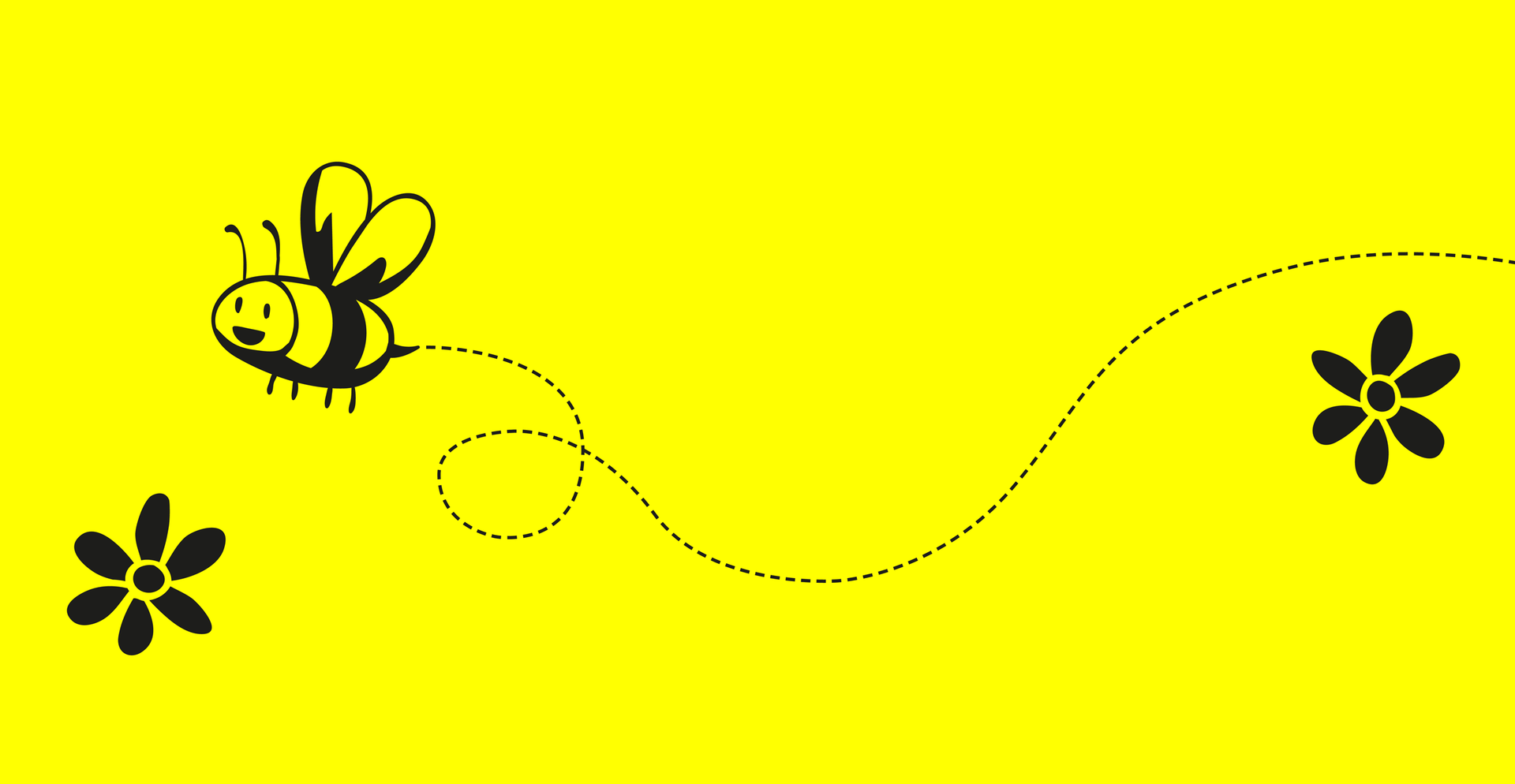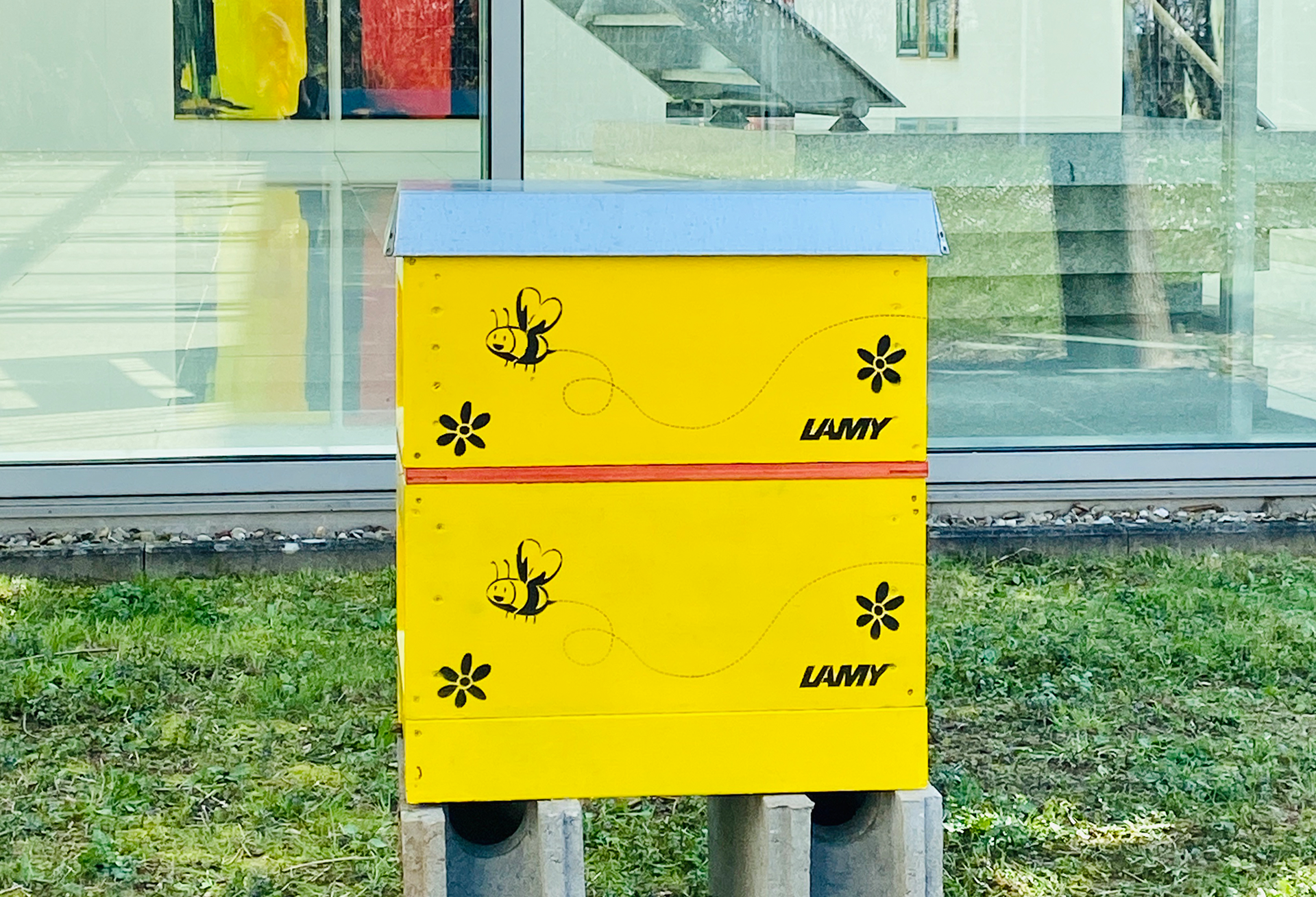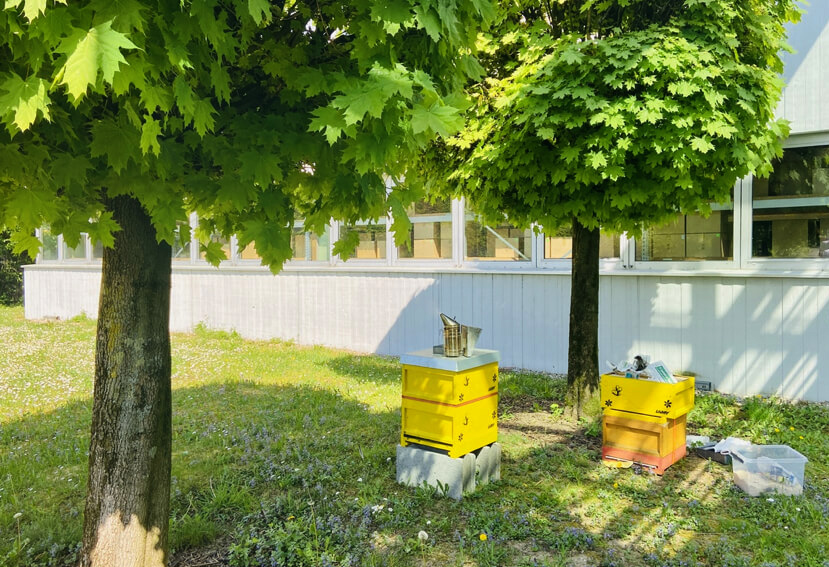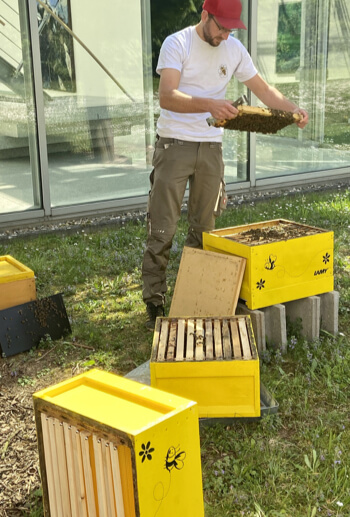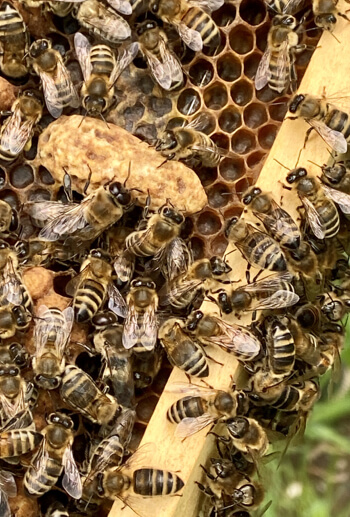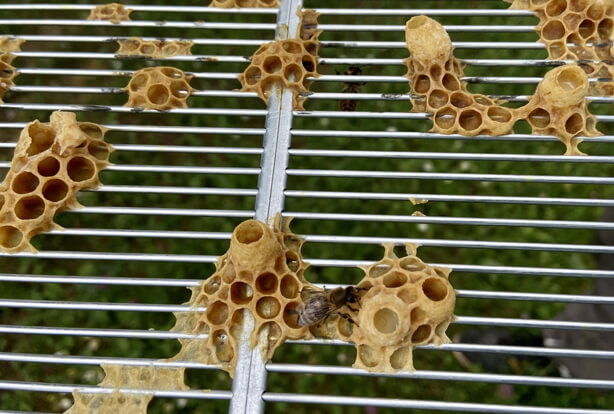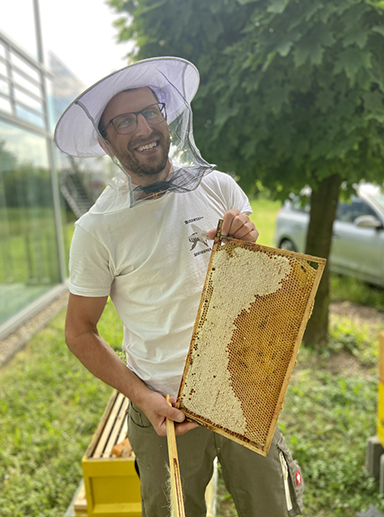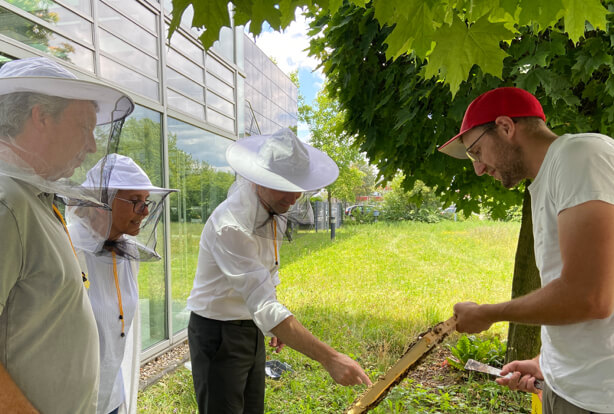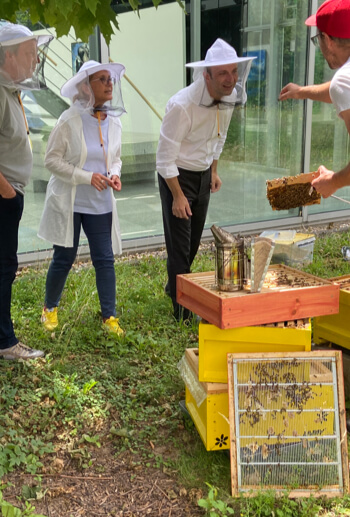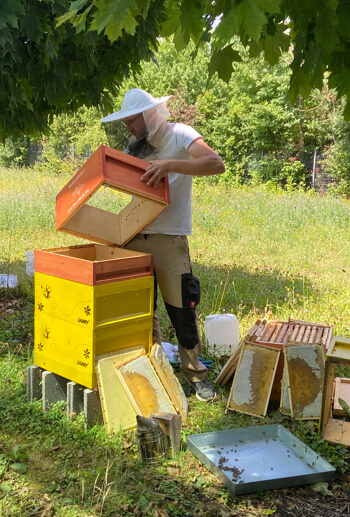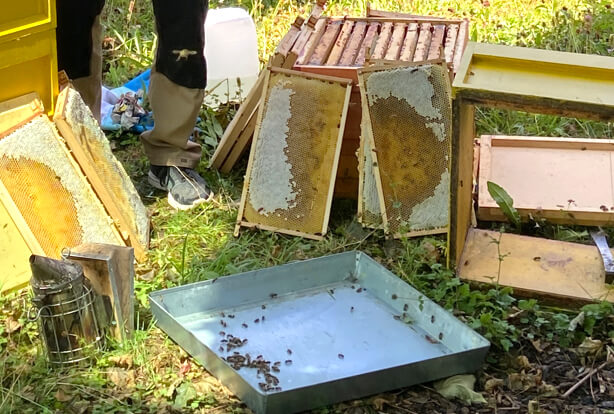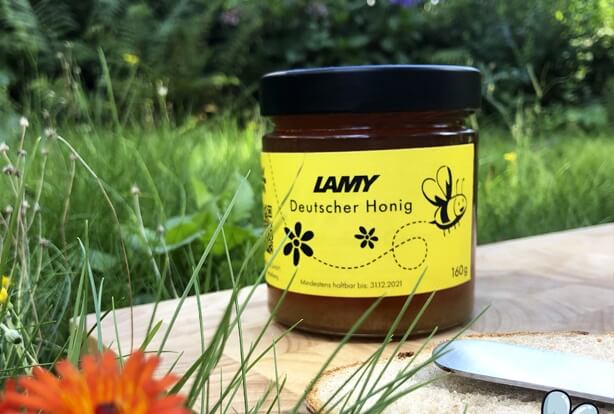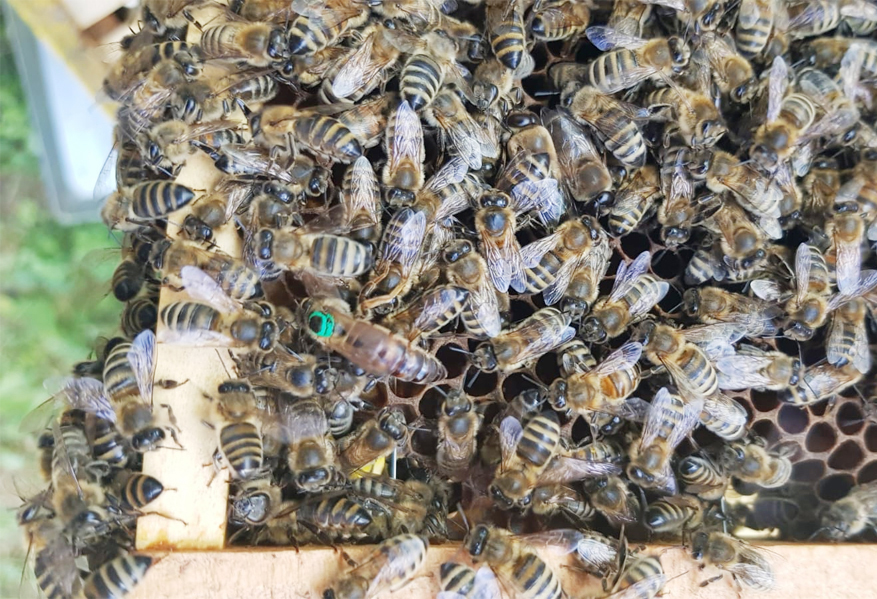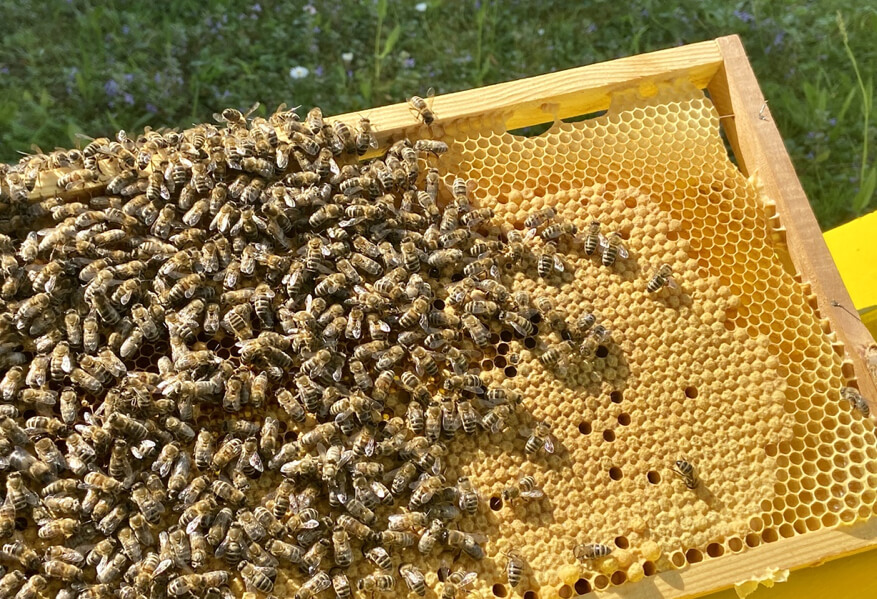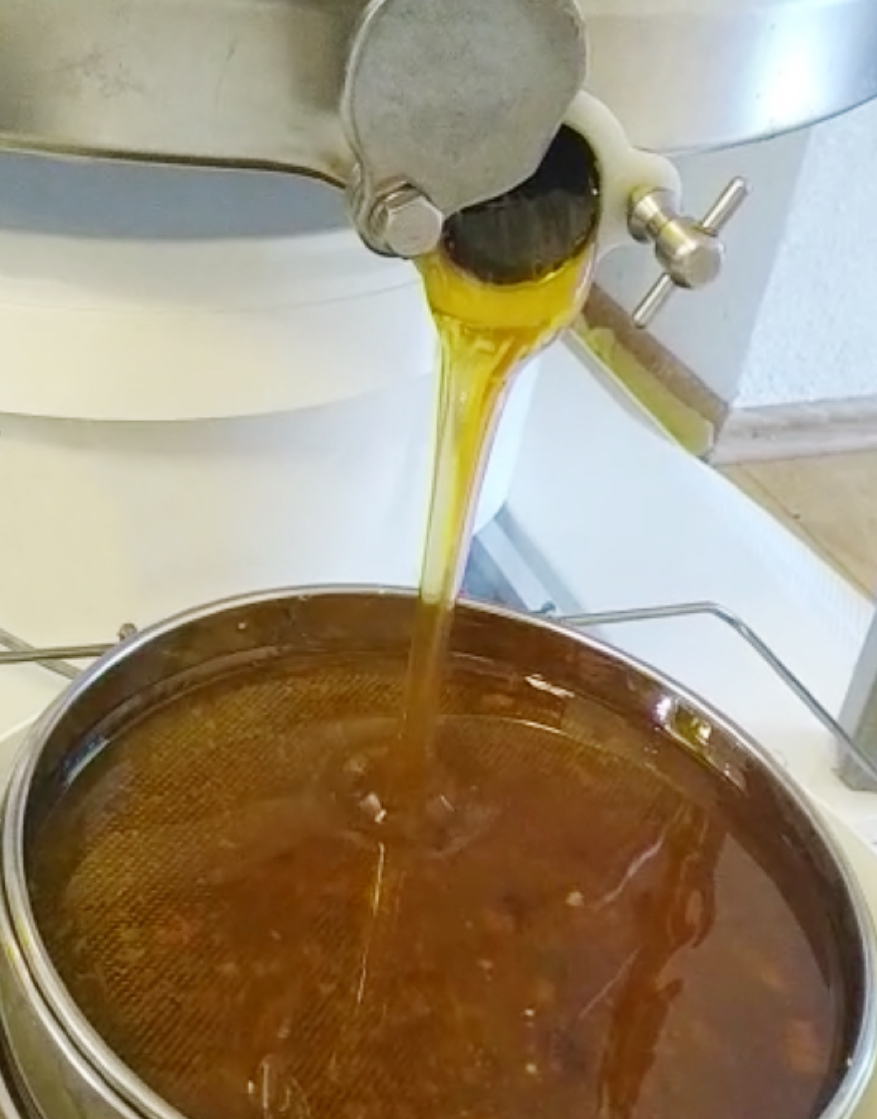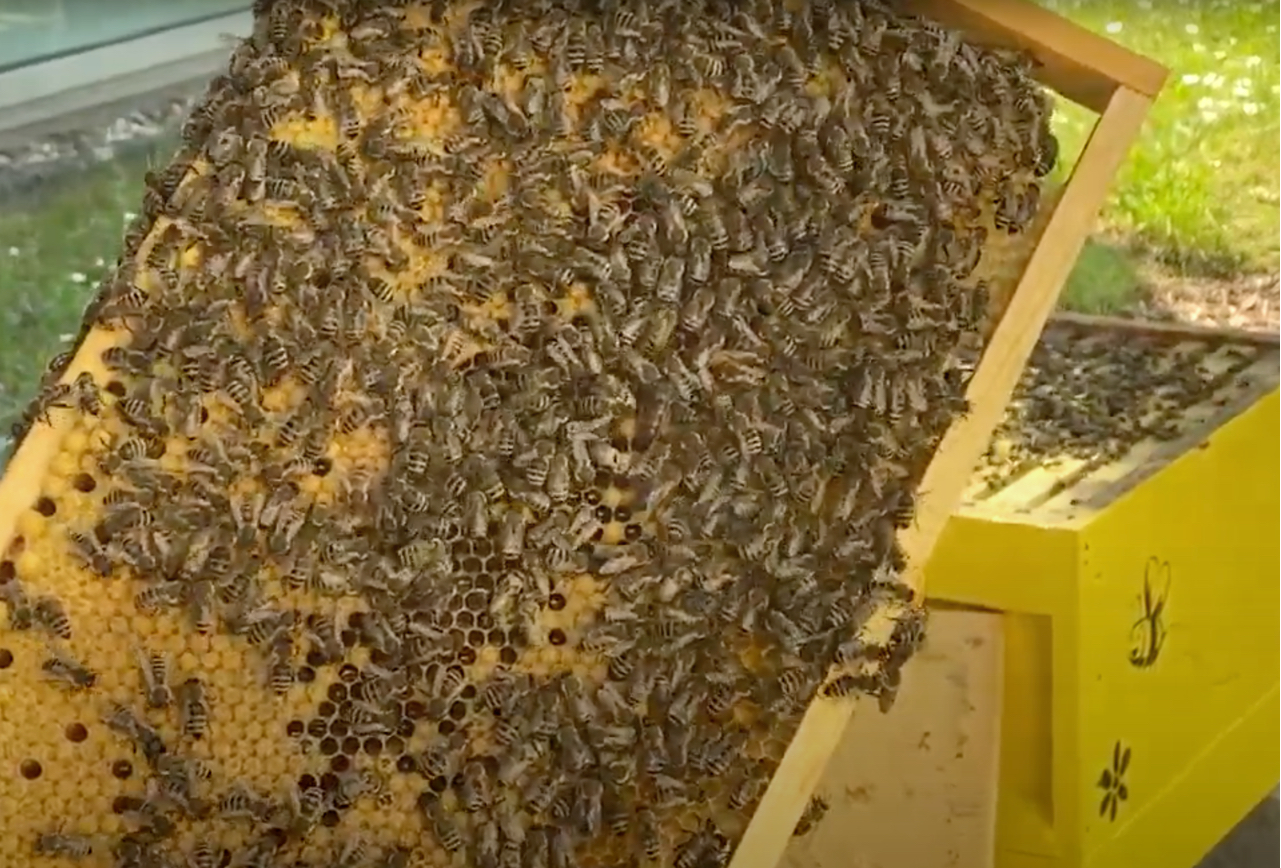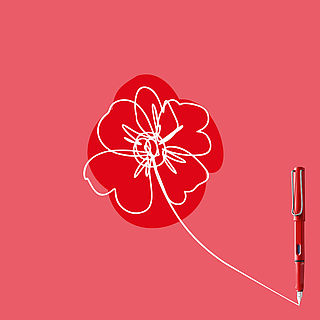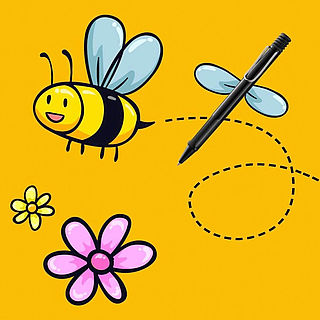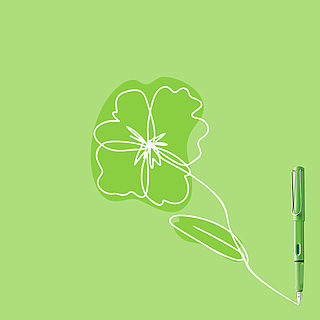A new home for honey bees
A busy bee colony has found a home in the green area behind the Lamy Galleria since March 2020. In the shade of two trees stands a bright yellow beehive that is regularly looked after by a professional regional beekeeper. With this special project, Lamy would like to make a small contribution to the important protection of endangered honey bees. Stay tuned, we will report about our bees on our website.
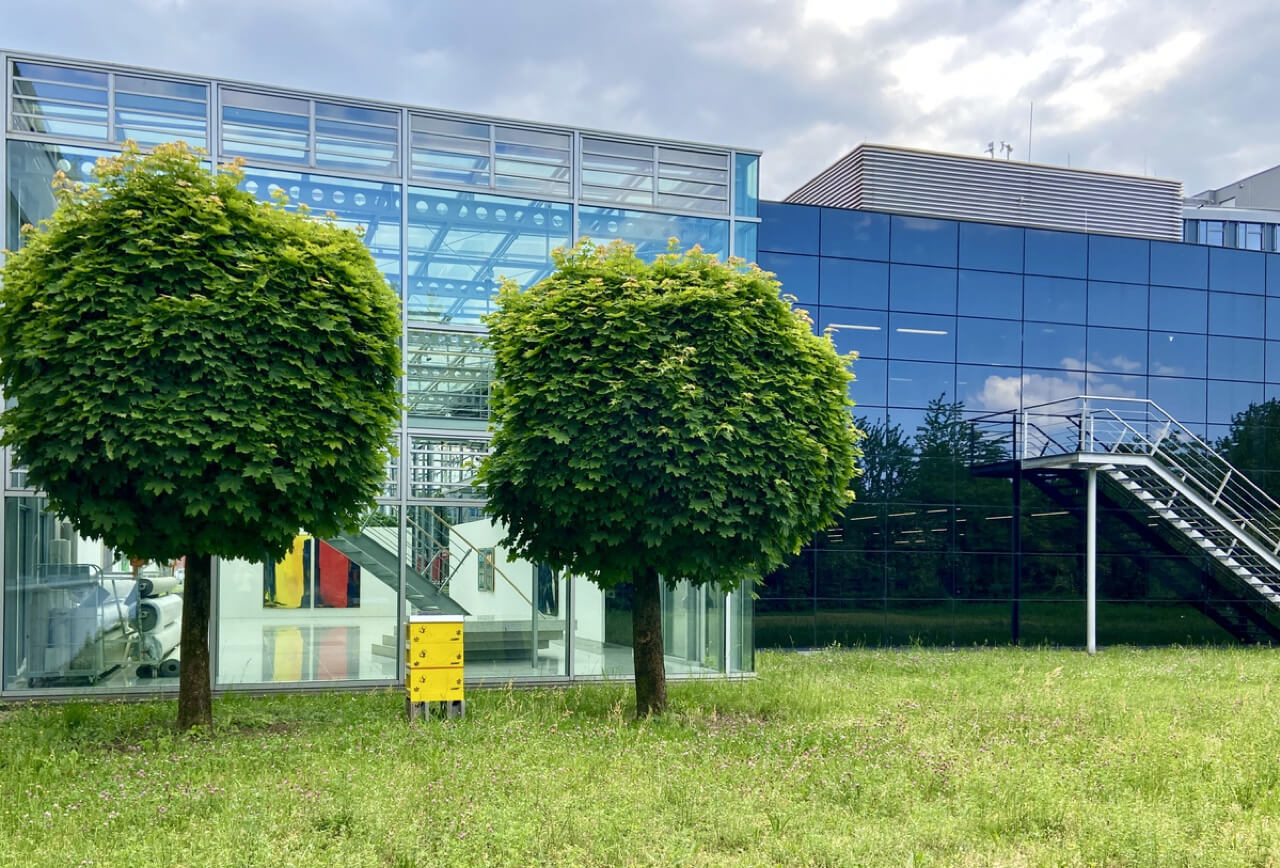
Did you know?
- A colony of honey bees comprises up to 50,000 bees in a beehive during the peak season in early summer.
- For one kilo of honey, a colony of bees has to fly to three to five million blossoms, covering a total distance of about 100,000 kilometres.
- In Germany, the honey bee is considered the third most important farm animal - after pigs and cattle.
- Bees prefer to fly to blue and yellow flowers. They cannot recognise the colour red.
- A worker bee produces two teaspoons of honey in its four to five weeks long life.
The beehive
For our honey bees we have a dwelling, a so-called “prey”, provided by our beekeeper. Our prey consists of three wooden boxes (frames) stacked one on top of the other, into which mobile wooden frames are inserted as a basis for the construction of the honeycomb. In the bottom is the flight hole, the lid is removable.
The workers independently build honeycombs from the body's own beeswax into the wooden frames from top to bottom by sweating out small wax flakes. For 100 grams of beeswax 125,000 wax flakes are needed. From this, about 8,000 cells can be built for the storage of pollen and honey and for rising the new generation.
The Lamy Bee Year
April, May, June:
Weekly swarm checks
May / June:
Cupping + offshoot formation
Mid-May + early July:
Honey harvest and spin
June-December:
Regular Varroa controls
Mid-July:
Varroa treatment part 1
July-September:
feed with sugar water
September:
Varroa treatment part 2
December:
Varroa treatment part 3
April: The first control
Our colony has doubled to 20,000 bees since delivery in March.
Beekeeper checks the honeycombs.
May: cupping + offshoot formation
It gets crowded in the beehive, the colony wants to swarm and we have spotted new princesses - queen cells.
The beekeeper has to act: Two honeycombs with bees are removed from the bee colony and unfortunately the queen cells have to be removed too.
May 20: World Bee Day
Just in time for World Bee Day, the first honey harvest.
Beekeeper Jörg Staffel takes the first full honeycombs.
June
Summer honey tastes great, we expect the next harvest at the end of July.
Bees are a top priority! Official bee visit with the management.
July: The second honey harvest - the summer honey is harvested.
The beekeeper removes the honeycombs.
The bees are quickly but gently swept off the honeycombs and prepared for transport. As a food substitute, a feed honeycomb is filled with sugar water.
August: Our honey is ready!
Golden yellow and extremely tasty - the Lamy honey is served!
Our hard-working colleagues have really broken all records in the past months. Not only did we have to expand the beehive, but they have also exceeded our expectations of the honey harvest by far: 52 kg of yummy produce!!
But not only our bees were busy. On this occasion we would like to thank our beekeeper Jörg Staffel from suedwest-mietbienen.de for his great work!
But now it's time to take a winter break and rest for spring 2023!
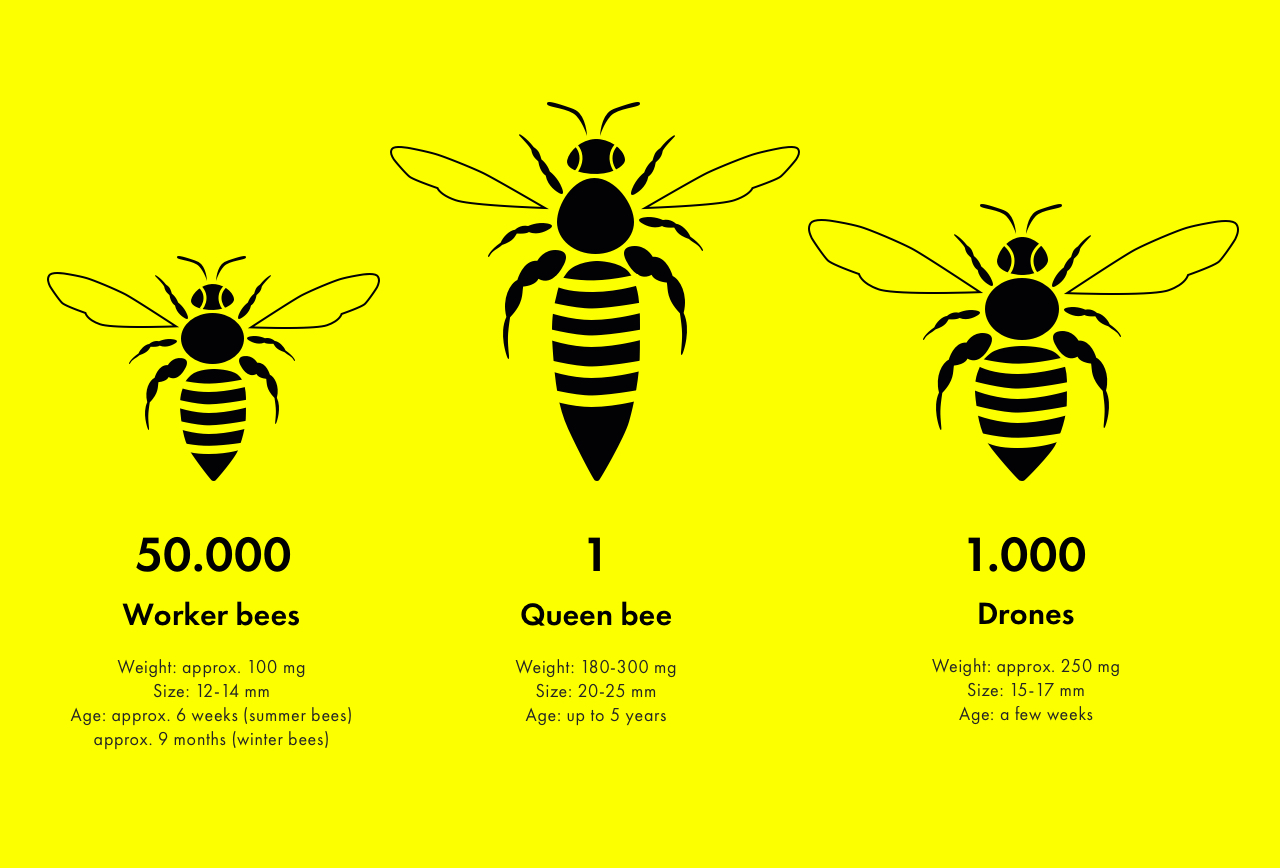
The queen
Each colony has only one queen at a time. She lives up to 5 years, in this time she is the only one who takes care of the colony and controls her fellow inhabitants in the beehive, furthermore she is responsible for the "harmony”. Queens initially develop like worker bees, but unlike other bee larvae, they are fed with a food juice produced by the nurse bees, the nutritious royal jelly.
“A queen lays up to 2,500 eggs a day!”
The worker bees
The sterile workers make up the majority of the bee colony. They have many tasks in different areas, from brood care to collecting nectar. The worker bees have a poison sting that they only use to defend the colony - they are not aggressive.
The tasks of worker bees change with age:
1-2 days old – "young bee"
brushing cells for 1-2 days
3-8 days old – "nurse bee"
feeding larvae
9-12 days old
first orientation flights in front of the flight hole
13-18 days old – "construction bee"
'sweating' of the wax plates and honeycomb construction
15-18 days old
take over the nectar, process into honey
19-21 days old – "guardian bee"
flight hole guard and defense against wasps, predating bees, humans and other intruders
from 22 days – "flying bee"
collecting flights (nectar, pollen, putty resin, water) and odd jobs (building, heat tremors, fan cooling)
The drones
A drone is a male honey bee. Unlike the female worker bee, drones do not have stingers and gather neither nectar nor pollen. A drone's primary role is to mate with an unfertilized queen. When they have completed this task, their life ends tragically.
Bee products
Bees produce a variety of useful products.
Honey
Honey is a food for bees and humans. It serves us as a sweetener and energizer. Honey is also the best known product of bees.
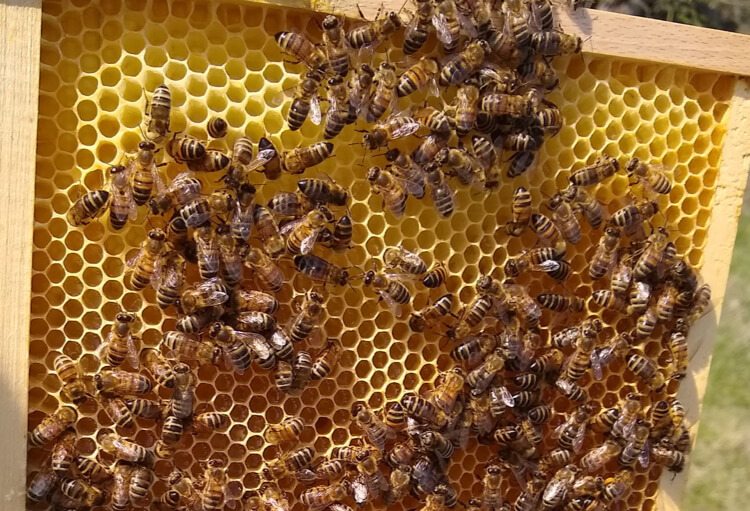
Beeswax
Is a wax separated from the honeybees which is used to build the honeycombs. Beeswax is often used by humans in natural cosmetics and in pharmacy.
Propolis
Propolis is a putty resin with antibacterial and anti-inflammatory effects. It protects the bees from invading microorganisms and prevents the spread of infections. Humans use it in naturopathy.
Royal jelly
It is the royal food juice. The juice is only intended for the queen bee, which it receives from the age of larvae. In natural medicine, royal jelly is a high-quality tonic (appetizing) for humans.
Bee venom
The venom of the honeybee - injected through the bee sting, which is used for defense. Bee venom is used worldwide in medicine and is used, among other things, to treat inflammatory joint diseases and rheumatism.
The bee venom is fatal to bees itself and is feared by most people because it is very painful and dangerous for allergy sufferers. If a bee stings, the sting with the poisonous bubble remains in the skin. The bee suffers a fatal injury. Bees only sting when they feel threatened - basically they are peaceful.
Bee pollen
Bee or bee pollen is the superfood for bees and humans. The pollen is a valuable source of protein and is valued by many people for its positive effects as a dietary supplement.
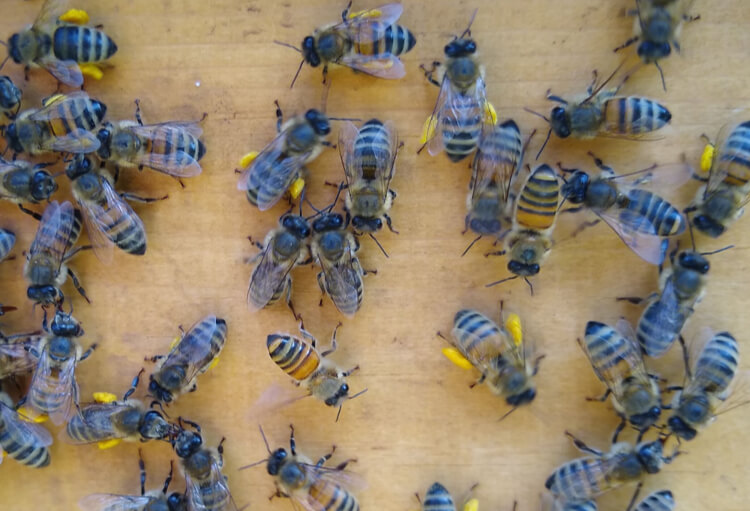
What's in the honey?
Honey is the sweet treat that beekeepers harvest from their bees. But what exactly does honey contain? The answer to this is complex, because in addition to sugar and water there are also minerals, trace elements, amino acids, enzymes and vitamins.
Among the substances mentioned, sugar accounts for the main part with approx. 80%. It contains up to 20 different types of sugar, but above all the simple sugar fructose and glucose. The second main component of honey is water with a share of mostly 15-20%.
In addition to these main ingredients, there are other substances that make honey so valuable for our nutrition. These are vitamins, especially vitamin C, B2 and B6, minerals like magnesium, potassium and calcium and trace elements like iron and zinc.
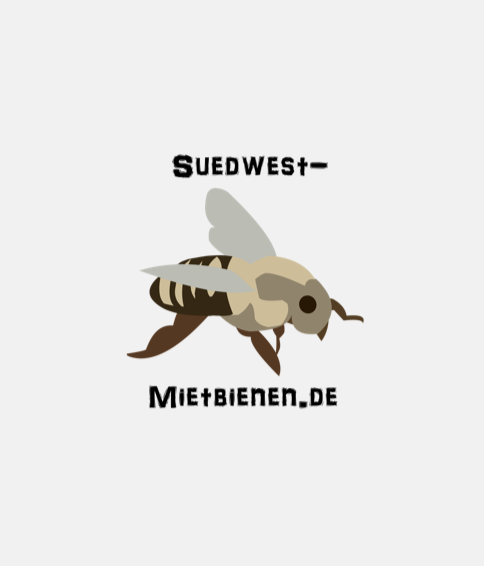
Südwest Mietbienen
Jörg Staffel
suedwest-mietbienen.de
